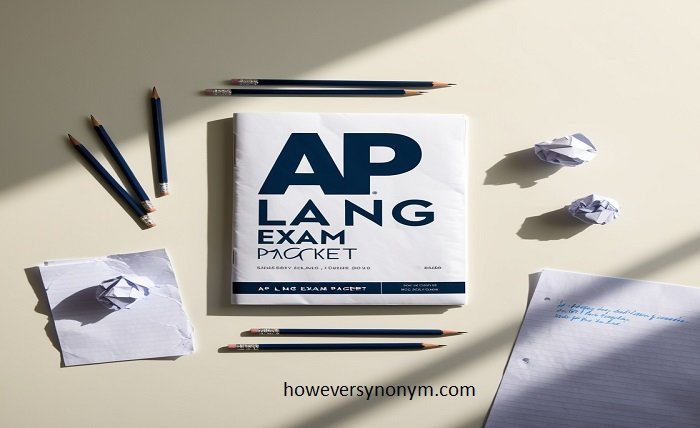Introduction
The goal of the ap lang exam and Composition exam is to evaluate students’ critical thinking and writing skills regarding challenging literature. It focuses on information synthesis, argumentation, and rhetorical analysis. Those who perform well on this test may be able to exhibit their great writing abilities to future academic institutions and even receive college credit. The first step to getting a high score is comprehending the structure and requirements of the exam.
Understanding the AP Lang Exam Format
The two primary components of the ap lang exam are designed to evaluate students’ writing and reading comprehension skills separately. The multiple-choice portion of the test, which accounts for 45% of the final score, consists of 45 questions that assess students’ comprehension of prose and non-fiction readings. Students’ comprehension of text construction and authorial rhetoric is tested in this part. The synthesis essay requires integrating multiple sources; the rhetorical analysis essay examines the strategies used in a text; and the argument essay requires students to construct and defend a persuasive argument. The second section of the exam, known as the free response portion, accounts for 55% of the total score.
Scoring Criteria
The ap lang exam is scored on a range of 1 to 5, where 5 represents the highest possible result. The exam’s multiple choice and free response sections are each given a separate score, and the total of those scores determines the outcome. The multiple-choice portion is graded based on the quantity of right answers, and the College Board provides extensive rubrics for evaluating the free response essays.
Developing a Study Plan
An organized study schedule is necessary for efficient ap lang exam preparation. To start, evaluate your present study habits and areas of strength and weakness. Set aside particular times each week for in-depth study sessions covering various exam topics. Include exercises in reading comprehension, practice writing essays, and timed practice exams in your strategy. Using a balanced approach guarantees that you develop the abilities and cover all the necessary material for both exam portions. You’ll stay on track and maximize your preparation if you regularly assess and modify your study plan in light of your progress and feedback.
Reviewing Core Concepts
A comprehensive review of essential ideas is essential for achieving success on the ap lang exam. Understanding different rhetorical devices like pathos, ethos, and logos and how they are used to enlighten and persuade readers are important ideas. It’s also essential to become proficient in argumentation strategies, which include developing a coherent thesis, logical reasoning, and persuasive evidence to back up assertions. Additionally crucial are synthesis abilities, which call for combining data from several sources into a coherent argument. You will be more prepared to handle the intricacies of the test if you understand and practice these fundamental ideas.
Reading Comprehension
Strong reading comprehension abilities are essential for doing well on the multiple-choice portion of the ap lang exam. Use active reading strategies to get better in this area, such as underlining important passages and annotating materials to deepen your comprehension. Focus on the primary concepts, motifs, and claims made in each section. To determine the meanings of unknown words and phrases, use context clues. Gaining proficiency in these areas will help you evaluate and comprehend texts more effectively, which will help you provide accurate and timely answers to multiple-choice questions.
Rhetorical Analysis
An intricate comprehension of textual composition is necessary for the multiple-choice ap lang exam’s rhetorical analysis. Concentrate on recognizing and evaluating the various rhetorical techniques that authors employ, such as imagery, tone, and diction, in addition to their use of ethos, pathos, and logos. Think about how these techniques support the author’s goals and the text’s overall effectiveness. By honing these analytical abilities and using them on a variety of texts, you will be more equipped to answer questions that gauge your grasp of rhetorical devices and their effects.
Crafting the Synthesis Essay
Students must synthesize material from numerous sources into a coherent argument for the ap lang exam synthesis essay. To begin, write a succinct and unambiguous thesis statement that responds to the essay prompt. Make good use of the available resources, adding proof and illustrations to bolster your claims. Put your essay in a logical order and make sure that every paragraph advances your main point. You can successfully handle the intricacies of the synthesis essay and receive a high mark on this portion by honing your synthesis skills and concentrating on writing that is clear and well-organized.
Conclusion
Understanding the format of the examination, grasping important concepts, and putting successful study techniques into practice are all necessary for success on the ap lang exam. Creating a well-organized study schedule, improving your essay writing abilities, and using test-taking strategies can all help you increase your chances of getting a good mark. Recall that the secret to doing well on test day is to have a solid grasp of the requirements and to practice consistently.
FAQ
What is the best way to prepare for the ap lang exam?
Making a well-organized study schedule, going over key ideas again, taking timed practice exams, and emphasizing reading comprehension and essay writing are the best ways to get ready.
How can I improve my essay-writing skills for the ap lang exam?
Write essays on a variety of topics on a regular basis, get comments from peers or teachers, and examine well-scoring sample essays to learn what works.read about more susonturf.
What should I focus on when taking the multiple-choice section?
Concentrate on comprehending the author’s point of view, evaluating rhetorical devices, and reading comprehension. To accurately answer questions, engage in active reading and make use of context clues.

